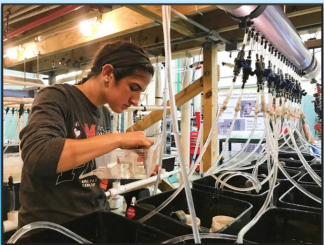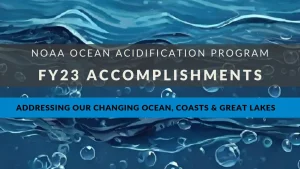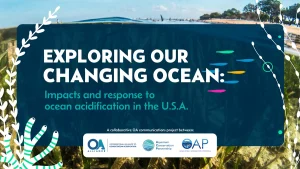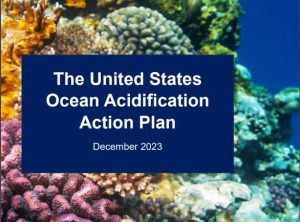Northeast Fisheries Science Center
Scientists and NOAA Hollings scholars at the Northeast Fisheries Science Center (NEFSC) are studying how Atlantic silverside, one of the most common fishes on the Atlantic Coast and an important diet component of many larger fishes of this region, are impacted by changes in ocean acidification (increased CO2, lower pH), increased temperature, and lower dissolved oxygen projected to occur in the future.
The team is exposing silverside embryos and larvae to these three stressors and monitoring effects on survival, hatching time, and size of the fish larvae at hatching and later in life. In addition, they are mimicking day-night cycles in CO2 by oscillating the CO2 levels every 12 hours and assessing how the magnitude of these fluctuations impact young silverside. This will help scientists better predict how future ocean conditions could alter this important food source.
Pictures: 1. 2017 Hollings Scholar Amy Zyck monitoring young Atlantic silverside in the CO2 and dissolved oxygen experiment at the NOAA Sandy Hook Laboratory. 2. Hollings Scholars Raven Benko and Megan Dotterweich seining the shores of Sandy Hook Bay for ripe adult Atlantic silverside, and collecting






